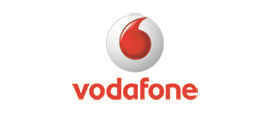Glossary
Un glossario chiaro, essenziale ed accurato, per aiutarti a comprendere meglio il linguaggio del marketing e della pubblicità.
Glossaries
| Term | Definition |
|---|---|
| Brand Voice | The Brand Voice is the consistent combination of tone, language, personality, and values that a brand uses to communicate with its audience. It's not just "what" is said, but crucially "how" it's said. It is the verbal expression of the brand's personality, which makes it recognisable and distinct from its competitors. |
| Brand Switchers | I Brand Switchers (or "brand-changing consumers") are a type of customer characterized by a low fidelity and the tendency to switch frequently from one brand to another within the same product or service category. Unlike loyal customers, Brand Switchers are open to experimentation and choose a brand based on contingent factors such as price, promotions, availability, or simple curiosity. |
| Brand Suitability | Brand Suitability is the collection of tools, rules, and procedures that a brand adopts to ensure that its advertisements (for example, display, video, or native) are only shown in editorial contexts (websites, video channels, apps) that are considered suitable, safe, and consistent with its values, image, and ethical standards. Unlike Brand Safety (which is more restrictive), Brand Suitability focuses on the quality of the context, not just its potential danger. |
| Brand Strategy | Brand Strategy (or Brand Strategy) is the long-term strategic plan that uniquely defines how a company or product intends to position itself, present itself, and communicate with its audience in the market. It is not just the logo or a single campaign, but the fundamental structure that establishes the brand's mission, vision, values, and promise. It acts as a "compass" that guides every business decision, from product design to marketing and communications, ensuring consistency and direction over time. |
| Brand Share | The Brand Share, often referred to as Market Share, is a marketing and commerce metric representing the percentage of total sales of a product or service held by a specific brand within its reference market, over a given period. It is generally calculated based on the revenue generated or the sales volumes. Essentially, it answers the question: "How much of the market pie belongs to my brand?" |
| Brand Reputation | Brand Reputation (or brand reputation) is the totality of perceptions, evaluations, and expectations that the various publics (customers, stakeholders, employees, etc.) have regarding a company or a product/service. It is not what the company says about itself, but what others think of it, which is the result of its history, corporate conduct, public relations, and communication over time. |
| Brand Positioning | Brand Positioning, or the positioning of a brand, is the strategic act of defining and communicating the unique value of a brand distinctively in the minds of the target audience. It involves finding and occupying that unique and relevant space that differentiates the company from its competitors. |
| Brand Personality | Brand Personality (or "Brand Personality") is the set of human traits that are attributed to a brand. It serves to give the brand a distinctive character, allowing it to speak, act, and "feel" in a consistent and recognisable way. These traits can range from "sincere" to "competent," from "exciting" to "sophisticated" or "rugged." |
| Brand Name | Brief Definition The Brand Name (or 'Nome di Marca') is the word, or collection of words, that christens the identity of a company, product, or service. It is the primary and most immediate verbal element that consumers use to identify and distinguish a brand from its competition. It functions as a type of trademark that can be legally protected through registration. |
| Brand Manager | The Brand Manager is the strategic executive responsible for the complete management and development of the image (Brand) of a product or group of related products within a company. They act as the custodian of the brand's identity, values, and reputation, ensuring it remains consistent, recognisable, and aligned with business objectives at every touchpoint. |
| Brand Loyalty | Brand Loyalty (or brand fidelity) is the result of a positive and lasting relationship between a consumer and a brand. It occurs when a customer develops such a strong preference that they repeatedly choose the products or services of that specific brand, even when faced with competing alternatives that might be cheaper or more convenient. It is a bond that goes beyond simple habit and touches upon emotional spheres, trust, and identification. |
| Brand Image | Brand Image is the overall perception, the collection of rational and emotional associations, and the reputation that a brand holds in the mind of the public and consumers. It is not what the company says it is, but what the public believes it to be. |
| Brand Hijacking | Brand Hijacking (literally, "brand hijacking") is the unauthorised appropriation of a company's identity, communication, or brand equity by a third party. This can be a malicious act intended to damage the reputation (for example, through scams or domain theft) or a creative, and often satirical, manipulation carried out by consumers or competitors. |
| Brand Extension | Brand Extension is a marketing strategy that involves using an existing and established brand to launch a product or service in a new product category, different from the one in which the brand usually operates. |
| Brand Equity | Brand Equity (or brand assets) is the intangible value and the collection of resources linked to a brand's name, symbol, or logo, which determine its strength and recognition in the marketplace. It represents the added value a brand manages to create compared to an "objective" product or service. This value essentially resides in the minds of consumers, influencing their perceptions and purchasing decisions. |

 IT
IT  EN
EN 































































